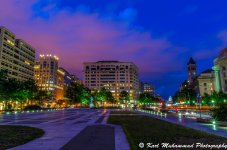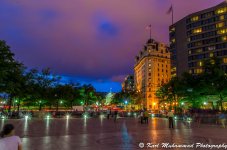If you're shooting in JPG go into your cameras menus, go into the "Shooting Menu" (green camera icon) and highlight "Set Picture Control".
From Picture Control click right one time.
Here you'll see different options for "Standard", "Landscape", "Vivid" etc.
Drop down and highlight "Standard" then click right one time.
You'll see options here one of which is "Sharpening". Highlight this option and adjust the slider to +7.
Press "OK" and exit the menus.
What these steps do is increase the in-camera sharpening done on your JPG photos automatically. Nikon cameras, for whatever reason, come from the factory with this option set really, really low. This one adjustment should make a big impact on how sharp your JPG's look right out of the camera. My instructions also assume you're using "Standard" in the Picture Controls menu. Each one of those controls (Vivid, Landscape, etc.) has their own set of menus so each has its own "Sharpening" setting. If you're using something other than "Standard" (I use Landscape personally) you'll need to adjust the sharpening in the Picture Control you actually use.
....





